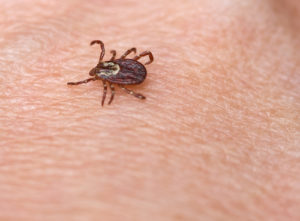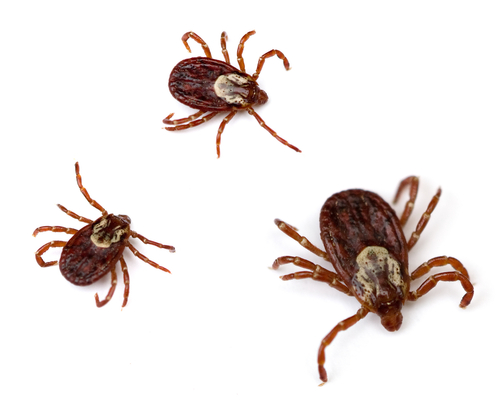This week’s entry is the American Dog Tick, also known as the wood tick. This tick is responsible for spreading several diseases. The American Dog Tick is responsible for spreading Rocky Mountain spotted fever in humans and dogs, and can cause tick paralysis in dogs. It is also responsible for spreading Anaplasma and Ehrlichia. This tick can also be exposed to Lyme disease but generally does not carry or spread the disease.
The American Dog Tick is usually found in areas with long grass, and highly wooded areas. By avoiding areas where these ticks thrive, by checking your dog daily for any ticks that he may have picked up while outside and using tick preventative products, the chances of your dog contracting any diseases from this tick are greatly reduced.
Rocky Mountain spotted fever is found in North America, Central America and South America. The disease is not very common here in Canada, but can occur wherever this tick is found. Symptoms in dogs are vomiting, lethargy, fever, abdominal pain, coughing, poor appetite and joint pain. If the disease becomes severe enough the infecting organism can cause damage to blood vessels in the extremities resulting in gangrene (tissue death). It is usually treated with antibiotics and treatment is usually successful if the disease is caught early.
Ehrlichiosis is a bacterial infection that can cause swollen lymph nodes, breathing disorders and joint pain. If caught early it can be treated with antibiotics but if left untreated it can lead to life-threatening bleeding disorders. Anaplasma is also a bacterial infection, causing high fever, joint pain, vomiting and diarrhea and can be treated successfully if caught early.
Tick Paralysis is not caused by an infectious organism but by a neurotoxin that is found in the female tick’s saliva. The disease is spread by the tick latching on for a meal and spreading the toxin into the blood of its host. The symptoms include vomiting, muscle weakness, fast heartrate, high blood pressure, drooling and an inability to eat properly. In most cases removing the offending tick as soon as possible will reduce the symptoms with a full recovery usually within 72 hours. Serious cases, however, can lead to death through respiratory paralysis. The Black-Legged Tick and Lone-Star tick are responsible for tick paralysis as well. Uncommon in our area, tick paralysis is found mostly in the south eastern United States, Pacific Northwest, and Rocky Mountain states.
Annual blood testing with Snap 4DX Plus will aid in screening for exposure to ticks and can also help to rule out any tick-borne diseases if your dog becomes ill. Of course, prevention is the key to keeping your canine companion healthy. By using your prescribed heartworm, flea and tick prevention your dog can have a happy, pest-free summer. Contact us if you have any questions. One our Client Care Representatives will be more than happy to assist you.



